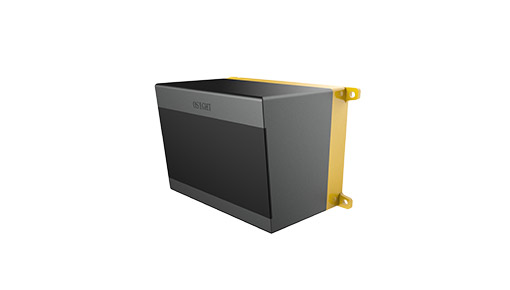What are the main laser ranging methods?
At present, the commonly seen ranging methods can be divided into time of flight (TOF) method and triangle method.
Laser time of flight method can be divided into two categories, one is pulse modulation (pulse ranging technology), the other is to modulate the intensity of laser continuous wave, and measure the phase ranging of distance information by phase difference.
We can see in the market rangefinder, or single line, multi line lidar, basically use these three kinds of ranging methods.
Laser pulse ranging technology
The principle of laser pulse ranging technology is very simple: by measuring the time of laser pulse flying back and forth between radar and target, the information of target distance is obtained. Here's a benchmark, the speed of light. All measurements must have a benchmark. For a laser, there are two benchmarks: speed and frequency (the two most accurate benchmarks), because the benchmark for TOF is the laser's flying speed.
Among the three ranging methods mentioned above, I think the most difficult one is pulse ranging. But the advantage it brings is obvious: the measurement speed is very fast. Because it is measured by the peak value laser, its anti-interference ability is very strong.
The disadvantage is that it is difficult to improve the range resolution and the detection circuit. For example, if we want to achieve a resolution of 1.5mm for phase ranging, we need to achieve a resolution of 10 picoseconds for timing clock, which is equivalent to 100g bandwidth, which is a very difficult technology.
Laser phase ranging
Laser phase ranging, such as the common hand-held laser rangefinder, is realized by the way of phase ranging. It mainly obtains the distance information by measuring the phase difference between the radar and the target caused by the intensity modulated CW laser signal flying back and forth.
The biggest advantage of this technology is that the ranging resolution is very high. At present, the phase rangefinders on the market can reach the millimeter resolution.
The disadvantage is that the measurement speed is slower than pulse ranging. After all, when we measure a phase difference accurately, we should do at least dozens or even hundreds of cycles, which is equivalent to lengthening the measurement time in a disguised way, so its measurement speed is relatively low. In addition, its measurement accuracy is easily affected by the shape movement of the target. If in the measured facula, two targets are one before the other after the other, in fact, the specific information it measures is an average value of the distance between the two targets, rather than the information of the previous target or the information of the latter target.
But in pulse ranging, it's easy to separate such information. For example, for a laser pulse, if we can achieve a pulse width of 10 nanoseconds, then we can distinguish a target with a distance of 30 cm between the front and back of the target through multiple echoes.
It is difficult to distinguish this method in phase ranging. Because in the measurement process, it will take a long time. The distance information brought in by the target motion is introduced into the measurement value. In fact, it measures an average distance information instead of real-time information. But the laser pulse ranging is actually the real-time information of the current position.
This is why lidar used in vehicle or robot often uses laser pulse ranging technology instead of phase ranging technology.
Triangulation ranging
Triangulation is to obtain the distance information by measuring the imaging position of laser irradiating point in the camera. The biggest advantage of triangulation is its low technical difficulty, low cost and high precision in short distance. For example, industrial application can achieve the ranging accuracy of 100 microns.
But the disadvantage is that its accuracy will gradually deteriorate with the increase of distance, and it can't basically compare with pulse ranging and phase ranging.
In addition, because CMOS camera must use a continuous laser synchronous lighting, its average power is relatively low, and its anti-interference ability is very strong. This distance measurement method is generally suitable for indoor short-range work, but not suitable for outdoor strong light background or indoor strong light background work.
Triangulation is more suitable for robot and other scenes with low performance requirements.
From the above figure, we can see that pulse ranging has excellent performance in all aspects except for its high cost and technical difficulty. Of course, its ranging accuracy will be slightly lower than that of phase ranging. But this kind of accuracy, according to the current technology, we can basically reach the centimeter level, or even several millimeter level ranging accuracy, which can basically meet our use requirements in many occasions.
Our main direction is to use pulse ranging to do single line radar, including multi line radar.
Recommended
-
2021-01-11
New product launch - Osight HE101 helps precise vehicle separation detection
In recent years, the road and bridge safety accidents often ...
-
2021-01-11
Shanghai robot exhibition ends perfectly
On July 4, the city of Magic - Shanghai.The huge national co...









